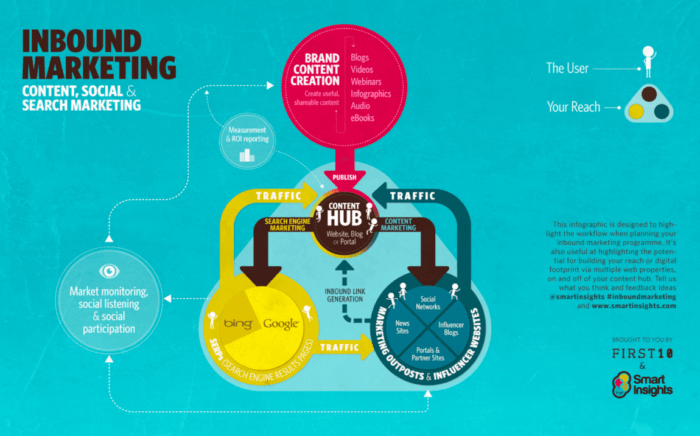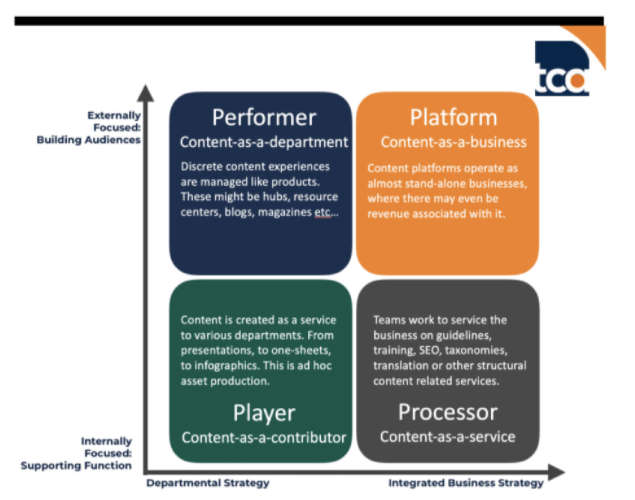If you're planning to launch or grow your SME in 2021, discover 5 small business marketing strategies to accelerate your growth from startup to long-term stability
Launching a start-up can be an exhilarating experience. However, there's a difference between launching an enterprise and being able to grow a small business so that it becomes a long-term success. The key to success is ensuring your small business marketing activity is working efficiently and effectively to build an audience for you.
If small business marketing was easy, everyone would be successful first time. Oftentimes what happens is that when a startup is launched, its founders tend to get overzealous with their efforts to monetize its products and services, while failing to build a solid foundation from which the startup can actually be a viable company in the future.
While running a small business presents many unique challenges, the reality is that its growth starts with one thing: marketing to build an audience.
If this remains the focus (assuming that the service or product that the startup offers is also up-to-par), success will surely follow.
So what exactly are the top strategies for effective small business marketing? Here are the 5 main steps for your small business:
1. Figure Out Your "Sweet Spot"
First and foremost, it's important to figure out your "sweet spot." If you're confused as to what I mean by that, the sweet spot is where your knowledge and skill expertise intersects with your genuine passion for a subject.
It means truly having a passion for the industry or subject matter, along with in-depth knowledge and/or skill within it. Of course, this is easier said than done, but the truth is that you need to love what you do and be damn good at it as well.
For example, if you have exceptional coding skills, and your passion is in cooking, you might want to consider ways in which you can merge the two, such as by creating a unique cooking app.
2. Discover Your Content Tilt
Your content tilt is what makes your own approach to the particular niche or area that you're going to business in different from everyone else's. Find a particular area that there's an opportunity in and a gap in products or services. You don't want to enter an over-saturated market, but instead, to find a niche that is underserved.
Once you do discover what your content tilt is, it'll be time to strike directly where there's minimal competition so that you can gain first-mover advantage and market share and return on investment.

Our content marketing Learning Path outlines these key features of content marketing:
- The quality and range of content must be outstanding and sustained to compete.
- You need a defined, branded hub or resource area to share content.
- You need to invest in seeding content and using influencers to increase awareness and sharing of content.
- If you get the whole process right it will support your overall brand marketing goals.
- You need the people, tools and process to monitor content and sharing effectiveness.
Core Module

Define a planned approach to content marketing
Part of the Content marketing Toolkit
Learn how to define an effective content marketing process for your business and market
Learn More3. Reach and convert audiences
You have launched your product - congratulations! Now, you need to grow your subscriber/follower rate. The best way to do this is to leverage audience aquisition tactics across paid, owned and earnt media. Remember, even if you are able to attract a high amount of web traffic, it'll all be for nothing if you can't also get the visitors to opt-in to your content.
Focus on audience personas and segmentation to ensure you are positioning your target messages efficiently and effectively. Our define audience personas module demonstrates how using personas could help you and your small business:
- Improve site and experience meet customer needs: Both navigation and content can be made more customer-centred through the use of personas.
- Increase conversion: The focus on customer journeys and user task completion that the approach encourages should help with this, as will creation of more engaging content assets which set the right tone and style to appeal to different types of purchaser.
- Encourage more targeted media spend and integration of a website with other channels: If cross-channel personas can be adopted, this will help facilitate multichannel journeys and media buying.
- Streamline team collaboration through a clear research and insight-led understanding of target audiences. Improvements can be based on clear data-led and research-led assumptions about priority users.

Core Module

Define audience personas
Part of the Content marketing Toolkit
Learn how to develop a customer persona that can help you to target your marketing more effectively
Learn More4. Diversify Your Core Digital Value Proposition
After you have been able to build up your audience from your core platform channel, it's then time to expand and not rest on your laurels. You can do this by expanding into different delivery channels by which you hope to attract and maintain an audience. This will vary from business to business so you will need to use your own findings from the ongoing customer analysis you conduct. As a starting point, Ecommerce Training Academy lists its top e-commerce digital marketing channels:
- Organic
- Email
- Paid Search
- Content Marketing
- Social Media
- Affiliates
- Referrals
There are many opportunities for small business marketers in diversification. Not only will you put your brand in front of more eyes, but you can gain stronger loyalty and engagement from your current audience, as they'll have multiple options through which they can engage with you.

5. Begin to Monetize Your Content
The final step of the process of launching and growing your startup is focused on monetizing your content. If you've followed the previous steps correctly, you should by now have a fair audience base and market share for your area. It's now time to reap the rewards.
The key way to monetize your content is to see what works and what doesn't work. You already have the subscriber count, so begin to analyze the quantitative and qualitative data and make adjustments when needed and see where there are opportunities to begin converting your audience into being paying customers.
The content operation models matrix allows you to classify the forces within your small business marketing strategy and identify opportunities for revenue.

Conclusion
Since the vast majority of startups fail within their first two years, do you really want to keep following the same outdated rules that other unsuccessful startup founders did?
Just make sure to offer something that's valuable and fills in a market gap, build your audience around it, and then monetize it. With attention spans shorter than ever and there being a growing number of options that are all vying for the attention of consumers, it makes sense to build your audience first and only then to focus on monetizing your product or service.
In the content-obsessed world that we live in today, this is the best path to long-term, sustainable growth for your small business. Good luck!
 Fatmir Hyseni is the CMO of Kosbit, a global full vendor for AT&T and a Strategic Advisor for Silverpost, a marketing platform based on Instagram. As an award-winning Chartered Marketer, Fatmir is passionate about digital transformation and tech startups and contributes to several digital and technology blogs, including Forbes. You can follow Fatmir on Twitter or connect on LinkedIn.
Fatmir Hyseni is the CMO of Kosbit, a global full vendor for AT&T and a Strategic Advisor for Silverpost, a marketing platform based on Instagram. As an award-winning Chartered Marketer, Fatmir is passionate about digital transformation and tech startups and contributes to several digital and technology blogs, including Forbes. You can follow Fatmir on Twitter or connect on LinkedIn.









 Fatmir Hyseni is the CMO of
Fatmir Hyseni is the CMO of 


